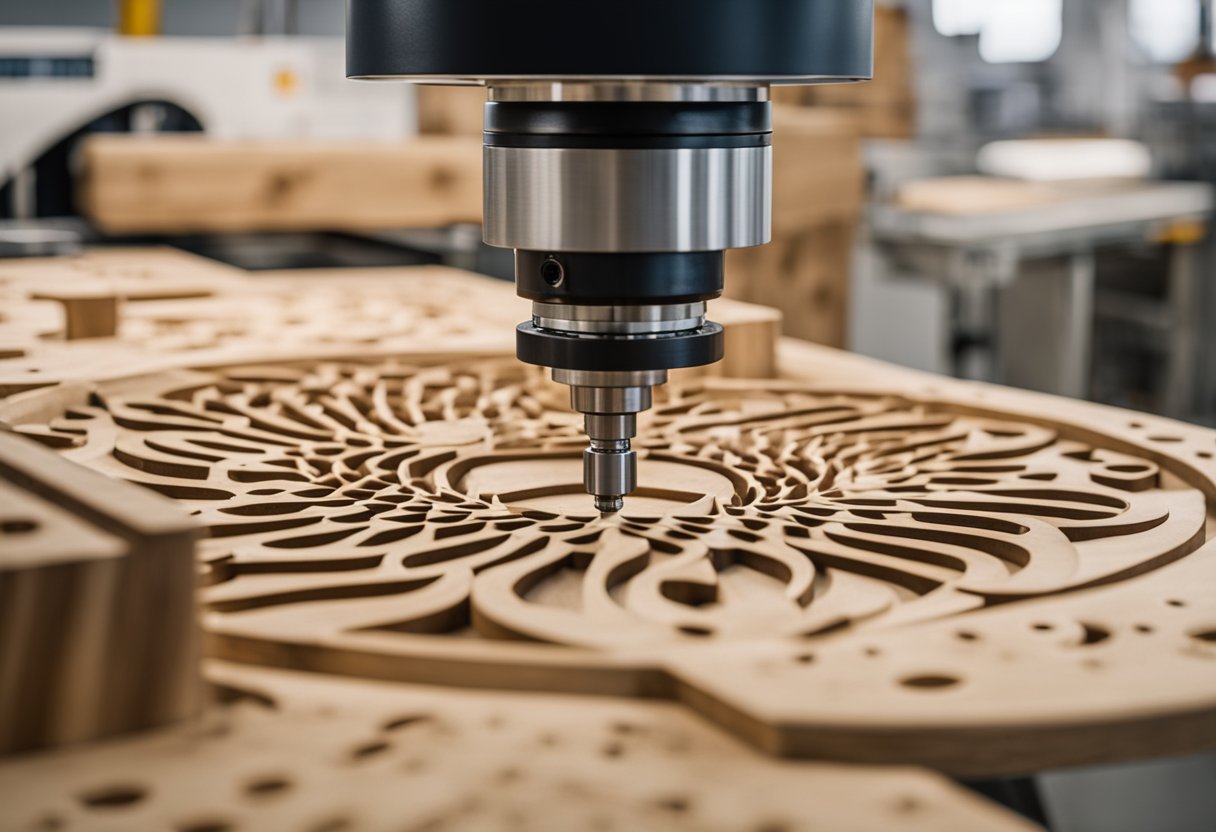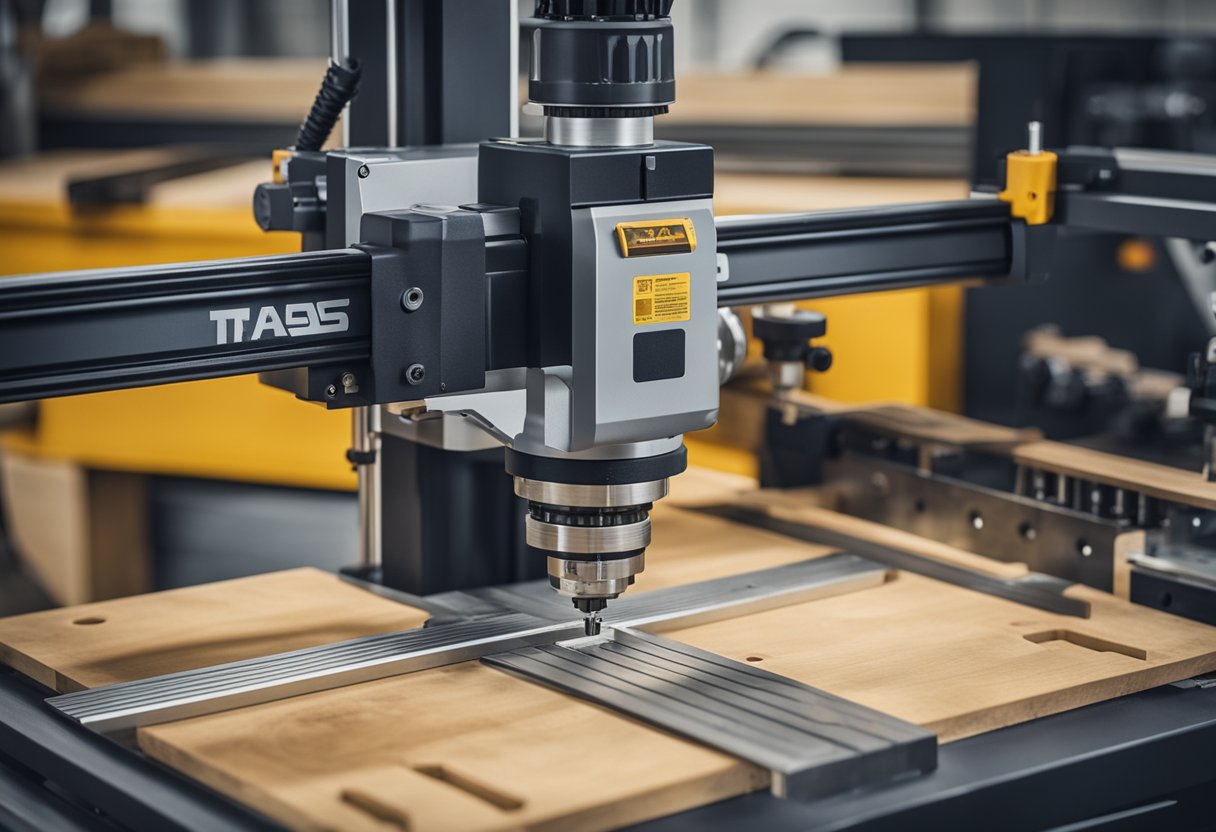CNC Router: A Comprehensive Guide to the Basics and Applications
A CNC router is a computer-controlled cutting machine that is used to create precise and intricate designs in a variety of materials. The machine is programmed using specialized software that allows the user to create designs and patterns that are then translated into instructions for the router to follow. The router then uses a cutting tool to carve out the design from the material.

CNC routers are widely used in a variety of industries, including woodworking, metalworking, and plastics manufacturing. They are particularly useful for creating complex designs that would be difficult or impossible to create by hand. They are also used for mass production of parts, as they are able to produce identical pieces with great accuracy and speed. As technology continues to advance, CNC routers are becoming more affordable and accessible to a wider range of users, from hobbyists to small business owners.
Understanding CNC Routers
CNC routers are computer-controlled cutting machines that can be used to cut, carve, and engrave a wide range of materials such as wood, plastic, and metal. They are widely used in the manufacturing industry, as well as in the hobbyist and DIY communities.
Types and Sizes
CNC routers come in a variety of sizes, from small desktop machines to large industrial models. The size of the machine will depend on the specific application and the size of the parts being produced. Small CNC routers are ideal for hobbyists and small-scale production, while larger machines are better suited for industrial applications.
Key Components
CNC routers consist of several key components, including the motor, spindle, gantry, ball screw, controller, driver, and collet. The motor drives the spindle, which rotates the cutting tool. The gantry is the frame that supports the cutting tool and moves it along the X and Y axes. The ball screw is used to move the gantry along the Z axis. The controller and driver work together to control the movement of the machine, while the collet holds the cutting tool in place.
Precision and accuracy are crucial in CNC routing, and the performance of the machine will depend on the quality of its components. High-quality components will result in better performance and more accurate cuts, while lower-quality components may result in errors and imprecise cuts.
In conclusion, CNC routers are versatile and powerful machines that are used in a wide range of applications. Understanding the types and sizes of CNC routers, as well as the key components that make up the machine, is essential for anyone looking to use these machines for their own projects or in an industrial setting.
Materials and Applications
Compatible Materials
CNC routers are versatile cutting machines that can work with a variety of materials. Some of the most common materials that CNC routers can cut, carve, and engrave include wood, plastic, metal, aluminum, acrylic, glass, PVC, MDF, foam, plywood, copper, brass, and even stone. CNC routers can also work with soft materials such as fabrics, leather, and foam rubber.
The type of material that a CNC router can work with depends on the type of bit used and the machine's power. For example, a CNC router with a high-speed spindle can work with harder materials such as metal and stone, while a machine with a lower-power spindle is better suited for softer materials like wood and plastic.
Industry Uses
CNC routers are used in a variety of industries, including woodworking, sign making, cabinet making, furniture production, musical instrument manufacturing, prototyping, and general manufacturing. In the woodworking industry, CNC routers are used to create intricate designs and shapes in wood, MDF, and plywood. In the sign making industry, CNC routers are used to cut and engrave acrylic, PVC, and foam board.
CNC routers are also commonly used in the production of cabinets and furniture. They can cut and shape wood, MDF, and other materials with precision, making it easier to create complex designs and shapes. In the musical instrument manufacturing industry, CNC routers are used to create intricate designs and shapes in wood, metal, and other materials.
Overall, CNC routers are versatile machines that can work with a wide range of materials and are used in a variety of industries. They provide precision and accuracy, making it easier to create complex designs and shapes with ease.
Selecting a CNC Router

When it comes to selecting a CNC router, there are a few things to consider. This section will cover some of the important factors to keep in mind when choosing a CNC router for your needs.
For Hobbyists and Small Businesses
For hobbyists and small businesses, a CNC router that is reliable and affordable is a great choice. The Genmitsu CNC Router Kit and the SainSmart 3018 Prover are both budget-friendly options that offer a good balance of features and specifications. These routers are great for beginners who are just starting out with CNC routing.
Features and Specifications
When it comes to features and specifications, there are a few things to keep in mind. The Bobscnc EVO 4 is a top pick for those who are looking for a CNC router with a very large work area. This router offers a cutting area of 24" x 24" x 3.3" and is capable of cutting a variety of materials.
In terms of power and quality, the Affordable CNC Router is a great option. This router offers a cutting speed of up to 300 inches per minute and has a working area of 24" x 36". It is also lightweight, making it easy to move around your workspace.
When selecting a CNC router, it is important to consider the brand and price. Some of the top brands in the industry include Genmitsu, SainSmart, and Bobscnc. Prices can vary widely depending on the features and specifications of the router, so it is important to set a budget before making a purchase.
Overall, there are many factors to consider when selecting a CNC router. By keeping features, specifications, and budget in mind, you can find a router that meets your needs and helps you achieve precision and accuracy in your work.
Setup and Maintenance

Assembly and Installation
Setting up a CNC router can seem daunting, but with the right guidance, it can be a straightforward process. Many CNC routers come with pre-assembled parts, making the assembly process simpler. However, some models require a bit more assembly, which can take a few hours to complete.
Before starting the assembly process, it is essential to ensure that you have a suitable working area for the CNC router. A flat and stable surface is necessary, with enough space to accommodate the router and any additional equipment, such as a dust collection system.
Once the assembly is complete, it is time to install the CNC router. This process involves connecting the router to a computer and configuring the software. Most CNC routers come with user-friendly software that is easy to set up and use.
Maintenance and Customer Support
Regular maintenance is necessary to keep the CNC router running smoothly and efficiently. This includes cleaning the machine regularly to prevent dust and debris from accumulating, which can affect its performance and accuracy. It is also essential to keep the router's rigidity in check, as any looseness can lead to inaccurate cuts.
If any issues arise with the CNC router, it is crucial to contact customer support immediately. Most manufacturers offer excellent customer service, with knowledgeable technicians who can help troubleshoot any problems. It is essential to keep all documentation and manuals in a safe place, as they can be helpful in resolving issues.
In summary, setting up and maintaining a CNC router requires careful attention to detail and regular upkeep. With proper assembly, installation, and maintenance, a CNC router can provide years of reliable service.
Frequently Asked Questions

What materials can a CNC router process?
CNC routers can process a wide range of materials, including wood, plastic, foam, composites, and non-ferrous metals. The type and thickness of the material being processed will determine the appropriate cutting tool and cutting speed.
How does a CNC router differ from a CNC mill?
While both CNC routers and CNC mills use computer-controlled cutting tools, they differ in the types of materials they can process. CNC mills are typically used for metalworking, while CNC routers are used for cutting softer materials like wood and plastic. CNC routers also tend to have larger work areas than CNC mills.
What factors influence the cost of a CNC router?
The cost of a CNC router can vary depending on several factors, including the size of the machine, the complexity of the cutting tools, and the level of automation. Additionally, higher-end machines may have more advanced features like automatic tool changers and dust collection systems, which can increase the cost.
What size CNC router do I need for my projects?
The size of CNC router needed for a project will depend on the size of the workpiece being processed. It's important to consider the maximum workpiece size when selecting a machine to ensure that it can handle the size of the project. Additionally, larger machines may have higher accuracy and faster cutting speeds, which can be beneficial for larger projects.
What maintenance is required for a CNC router?
Regular maintenance is important for ensuring the longevity and accuracy of a CNC router. This includes cleaning the machine regularly, checking and replacing cutting tools as needed, and lubricating moving parts. It's also important to keep the machine calibrated and to perform regular software updates.
How can I improve the precision of my CNC router cuts?
Several factors can affect the precision of CNC router cuts, including the quality of the cutting tools, the rigidity of the machine, and the accuracy of the software. To improve precision, it's important to use high-quality cutting tools and to ensure that the machine is properly calibrated. Additionally, using software with advanced features like automatic toolpath optimization can help to improve accuracy.
